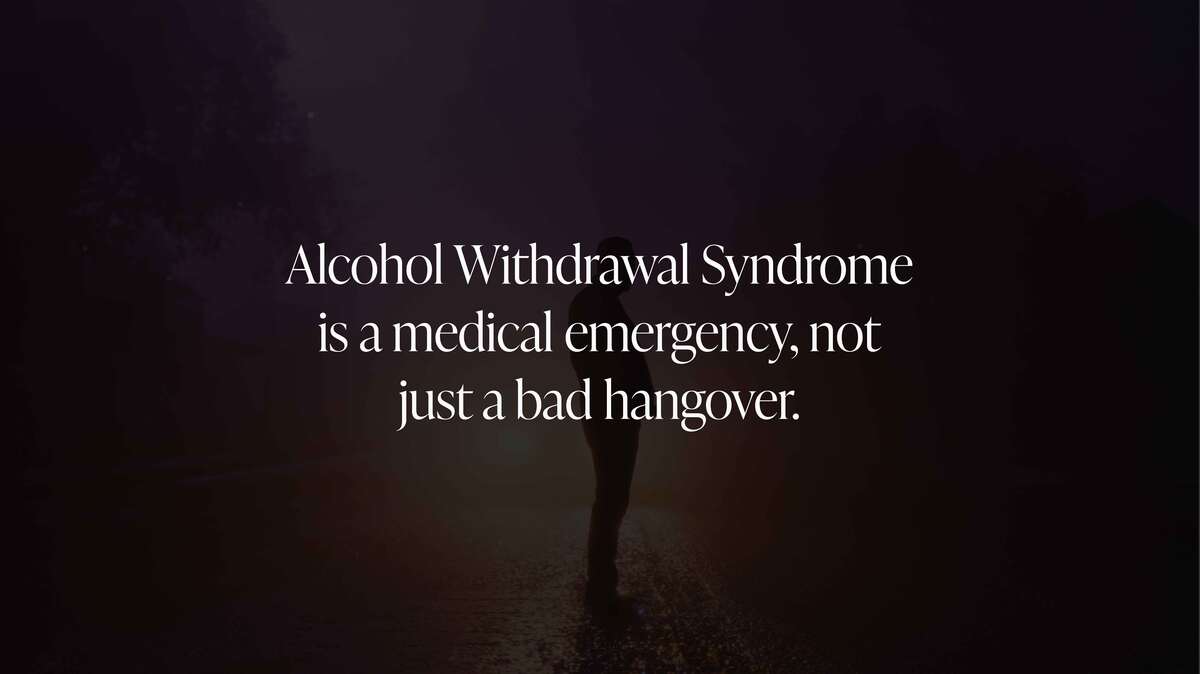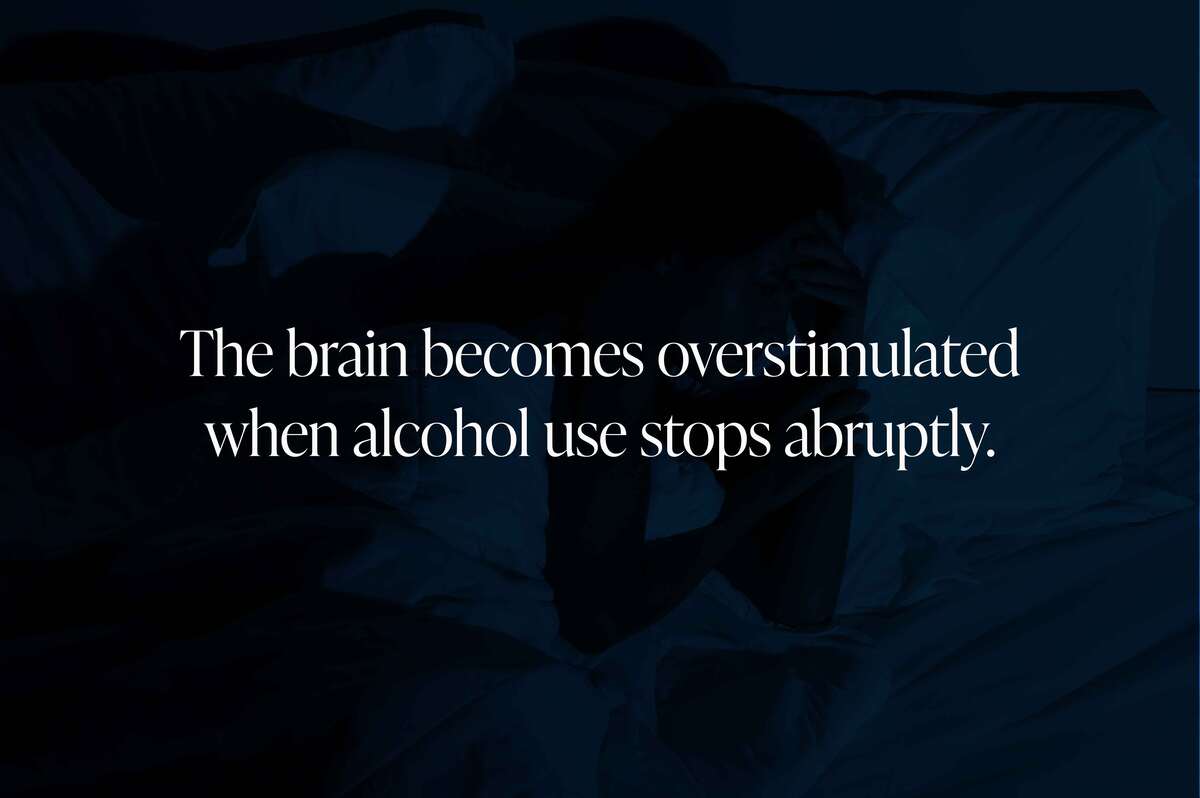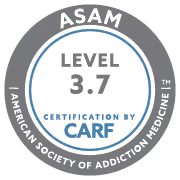Table of Contents
Understanding Alcohol Withdrawal Syndrome
Alcohol Withdrawal Syndrome (AWS) is a medically recognized condition that occurs when a person who has been drinking heavily for an extended period suddenly stops or significantly reduces alcohol intake. AWS is more than just feeling hungover—it’s a complex set of physical and psychological symptoms caused by the brain's adjustment to functioning without alcohol.

What Triggers Withdrawal Syndrome?
Long-term alcohol use alters the balance of neurotransmitters in the brain. Alcohol enhances the effect of GABA, a neurotransmitter that calms brain activity, while suppressing glutamate, which excites it. Over time, the brain reduces GABA production and increases glutamate to compensate. When alcohol is abruptly removed, the brain becomes hyperactive due to the sudden imbalance, resulting in withdrawal symptoms.

Key Signs of Alcohol Withdrawal Syndrome
AWS symptoms typically begin within 6 to 12 hours after the last drink and can persist for several days. They vary in severity depending on the individual’s drinking history, health status, and previous withdrawal experiences. Common symptoms include:
- Tremors or shaking
- Irritability and anxiety
- Sweating
- Rapid heartbeat
- Headaches
- Nausea and vomiting
- Insomnia
More severe signs involve neurological and cardiovascular complications, such as:
- Hallucinations (usually visual)
- Seizures
- High blood pressure
- Delirium tremens (DTs)
DTs are the most severe manifestation of AWS, characterized by severe confusion, agitation, fever, and potential cardiovascular collapse. They occur in about 3% to 5% of withdrawal cases and require emergency medical care.

Stages of Alcohol Withdrawal Syndrome
Alcohol withdrawal progresses through three main stages. Understanding these stages helps individuals and healthcare providers anticipate symptoms and plan treatment accordingly.
Stage 1 (Mild)
Begins within 6 to 12 hours of the last drink
Symptoms: Anxiety, restlessness, mild tremors, nausea, headache
Stage 2 (Moderate)
Occurs within 24 to 48 hours
Symptoms: Increased blood pressure, heart rate, body temperature, more pronounced tremors, confusion, mild hallucinations
Stage 3 (Severe)
Occurs after 48 hours
Symptoms: Delirium tremens, seizures, profound disorientation, possible heart complications
Not every person will progress through all three stages, but early recognition and intervention can prevent the condition from worsening.
Diagnosing Alcohol Withdrawal Syndrome
Clinicians use the CIWA-Ar (Clinical Institute Withdrawal Assessment for Alcohol) scale to evaluate the severity of AWS. This tool assigns scores based on 10 symptoms, including tremors, hallucinations, anxiety, and orientation. Higher scores indicate more severe withdrawal and influence treatment decisions.
How Is AWS Treated?
Treatment depends on symptom severity and individual risk factors. The primary goals are to reduce symptoms, prevent complications, and stabilize the patient.
For mild to moderate cases:
- Outpatient monitoring
- Oral benzodiazepines
- Nutritional supplements (e.g., thiamine, folic acid)
- Hydration and electrolyte management
For severe cases or those with a history of complicated withdrawal:
- Inpatient hospitalization
- Intravenous benzodiazepines
- Continuous monitoring of vital signs
- Sedation and seizure prevention
- Oxygen therapy, if needed
Can Alcohol Withdrawal Syndrome Be Prevented?
Yes. The safest approach is a medically supervised tapering process rather than abrupt cessation. Physicians may create personalized detox protocols using gradually reduced alcohol intake or medication-assisted strategies.
Preventing AWS is particularly important for people with:
- A history of seizures or DTs
- Chronic liver disease
- Co-occurring psychiatric conditions
- High daily alcohol consumption
If you’re concerned about withdrawal risks, explore safe detox strategies with support from professionals. You can begin with the Addiction Guidance resources at Hollywood Hills Recovery.
Long-Term Recovery After AWS
Completing withdrawal is only the beginning of recovery. After detox, patients often experience psychological symptoms like mood swings, fatigue, and cravings. Continuing care is essential and may include:
- Cognitive behavioral therapy (CBT)
- Group counseling or support groups like AA
- Medication-assisted treatment (e.g., naltrexone)
- Sober living environments
- Ongoing medical and psychiatric care
Final Thoughts
Alcohol Withdrawal Syndrome is a serious, potentially life-threatening condition that demands medical attention. Recognizing the signs early and seeking professional help can prevent dangerous complications. With the right support, individuals can manage withdrawal safely and begin building a long-term recovery plan that supports lasting sobriety.












